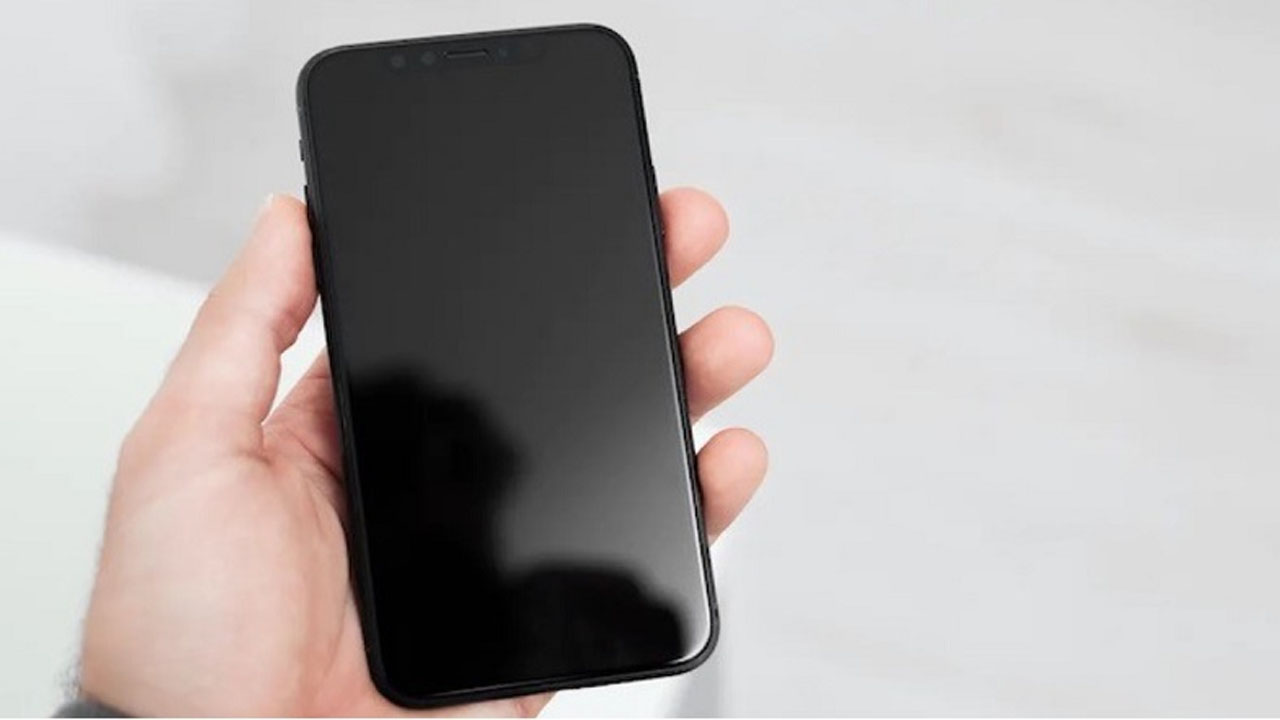The Apple iPhone XR is a great device, but it can sometimes experience issues like the black screen of death. This issue is characterized by a black screen, and the device becomes unresponsive. In this article, we will discuss the possible causes and troubleshooting procedures for this problem.
Possible Causes
To fix the Apple iPhone XR black screen of death issue, it’s important to first understand the potential causes of the problem. The issue may stem from various factors, ranging from software to hardware related problems. Identifying the possible causes is the first step towards troubleshooting the issue and finding a solution. In this section, we’ll explore some of the potential causes of the iPhone XR black screen of death issue.
- Software Issues: The black screen of death can be caused by software issues such as a corrupt iOS version or a faulty app.
- Hardware Issues: Hardware issues such as a damaged display, battery, or charging port can also cause the black screen of death.
Troubleshooting Procedures
After identifying the possible causes of the Apple iPhone XR black screen of death issue, the next step is to take action and troubleshoot the problem. There are several procedures that can be taken to fix the issue, ranging from simple to more complex methods. In this section, we will discuss some effective troubleshooting procedures to help you get your iPhone XR back up and running.
Force Restart
Force restarting an iPhone XR is necessary when troubleshooting the black screen of death issue because it can help reset the device’s software and resolve any glitches or freezes that may be causing the problem.
This method can be performed quickly and easily, and it can be effective in resolving the issue without the need for more complex procedures.
It’s a good first step to try when dealing with a black screen and an unresponsive device.
To force restart an iPhone XR, follow these steps:
- Press and quickly release the volume up button.
- Press and quickly release the volume down button.
- Press and hold the side button until the Apple logo appears on the screen.
- Release the side button and wait for the device to restart.
The force restart process may take a few seconds, but it should not take longer than a minute to complete. Once the device restarts, check to see if the black screen issue has been resolved. If the issue persists, try some of the other troubleshooting procedures mentioned in this article.
Charge the Device
Charging the device is an essential troubleshooting step for fixing the Apple iPhone XR black screen of death issue. Sometimes, the device may have simply run out of power, which can cause the screen to go black and the device to become unresponsive. By connecting the device to a power source and letting it charge for at least an hour, you can ensure that it has enough power to turn on and function properly.
To charge your Apple iPhone XR, follow these steps:
- Plug in the Lightning cable: Take the Lightning cable that came with your device and insert the USB end into a power adapter or USB port on your computer.
- Connect the Lightning cable to your iPhone: Plug the other end of the Lightning cable into the charging port located at the bottom of your iPhone XR.
- Verify the charging status: Once connected, your iPhone XR should begin to charge automatically. You can verify the charging status by looking for the lightning bolt icon on the battery icon in the top-right corner of the screen.
- Wait for the device to charge: Leave your iPhone XR connected to the power source until it’s fully charged or until it reaches the desired battery level. This can take a few hours, depending on how much charge your device needs.
- Unplug the Lightning cable: Once your device is fully charged or reaches the desired battery level, unplug the Lightning cable from the charging port on your iPhone XR and from the power source.
By following these simple steps, you can easily charge your Apple iPhone XR and ensure that it has enough power to function properly.
Restore iPhone
Restoring your Apple iPhone XR may be necessary in certain situations where your device is experiencing persistent problems or issues that can’t be resolved through normal troubleshooting steps. Some of the reasons why you may need to restore your iPhone XR include:
- Software issues: If your iPhone XR is experiencing frequent crashes, freezes, or other software-related issues, restoring your device to its original factory settings may help resolve the problem.
- Performance issues: Over time, your iPhone XR may begin to slow down or become unresponsive due to a buildup of unnecessary data or software. Restoring your device can help clear out this data and restore your device’s performance.
- Security concerns: If your device has been compromised by malware or other security threats, restoring your device can help remove these threats and restore your device’s security.
- Selling or giving away your device: If you plan to sell or give away your iPhone XR, restoring your device to its original factory settings can help ensure that your personal information and data are fully erased from the device.
To restore your Apple iPhone XR, follow these steps:
- Back up your data: Before restoring your device, it’s important to back up all your data to ensure that you don’t lose any important files. You can do this by connecting your device to a computer and using iTunes or Finder to create a backup.
- Turn off Find My iPhone: If you have Find My iPhone turned on, you’ll need to turn it off before restoring your device. To do this, go to Settings > [Your Name] > Find My > Find My iPhone, and then toggle the switch to the off position.
- Connect your device to a computer: Use a Lightning cable to connect your iPhone XR to a computer with the latest version of iTunes or Finder installed.
- Put your device into recovery mode: Depending on your device model, the process for putting your iPhone XR into recovery mode may vary slightly. Follow the instructions provided by Apple to put your device into recovery mode.
- Restore your device: Once your device is in recovery mode, you can restore it using iTunes or Finder. Follow the prompts to restore your device to its original factory settings.
- Set up your device: After the restore process is complete, you can set up your device as new or restore it from a backup. Follow the prompts to set up your device as desired.
By following these steps, you can easily restore your Apple iPhone XR and ensure that it’s functioning properly. Note that restoring your device will erase all data and settings, so be sure to back up your data before beginning the process.
Contact Apple Support
Contacting Apple Support may be necessary if you are experiencing issues with your Apple iPhone XR that cannot be resolved through normal troubleshooting steps. Some reasons why you may need to contact Apple Support include:
- Hardware issues: If your iPhone XR is experiencing hardware-related problems, such as a cracked screen, faulty battery, or other physical damage, Apple Support can help diagnose and repair the issue.
- Software issues: If your iPhone XR is experiencing persistent software issues that cannot be resolved through normal troubleshooting steps, Apple Support can provide additional support and guidance to help resolve the issue.
- Warranty or repair coverage: If your iPhone XR is covered under warranty or repair coverage, Apple Support can help you initiate a repair request and provide assistance with the repair process.
- Account or billing issues: If you are experiencing issues with your Apple account or billing, Apple Support can provide assistance with account management and billing-related issues.
In general, contacting Apple Support can be a helpful resource for resolving complex or persistent issues with your iPhone XR. The support team can provide additional guidance, troubleshooting steps, and repair services to help ensure that your device is functioning properly.
The Bottom Line
If you’re experiencing the “black screen of death” issue on your Apple iPhone XR, there are several troubleshooting steps you can take to try and resolve the problem.
From force restarting your device to restoring it to its original factory settings, these steps can help get your device back up and running.
If these steps don’t work, it may be necessary to contact Apple Support for additional assistance.
Remember to back up your data before attempting any troubleshooting steps, and follow the guidance provided by Apple to ensure a successful resolution of the issue.
Frequently Asked Questions
A: The “black screen of death” is a common issue that some iPhone users may experience. It refers to a situation where the iPhone’s screen remains black and unresponsive, even when the device is turned on.
A: There are several potential causes of the black screen of death on an iPhone, including software issues, hardware damage, and other underlying problems.
A: Yes, the black screen of death can often be fixed through various troubleshooting steps, such as force restarting the device, restoring it to its factory settings, or contacting Apple Support for assistance.
A: While there’s no surefire way to prevent the black screen of death from occurring, you can take steps to reduce the risk of software and hardware issues. For example, regularly updating your device’s software, using a protective case, and avoiding exposure to extreme temperatures can help keep your iPhone functioning properly.
A: The black screen of death may be covered under your iPhone’s warranty, depending on the cause of the issue and your device’s warranty coverage. It’s best to contact Apple Support to determine whether your device is eligible for warranty repair or replacement.
A: In some cases, it may be possible to recover data from an iPhone that is experiencing the black screen of death. However, this depends on the cause of the issue and the extent of the damage. If you have a recent backup of your device, you may be able to restore your data onto a new device. Alternatively, you can contact a data recovery specialist for assistance.
A: The time it takes to fix the black screen of death on an iPhone can vary depending on the cause of the issue and the troubleshooting steps taken. Some issues can be resolved quickly with a force restart or simple software update, while more complex issues may require several hours of troubleshooting or even a device replacement. It’s best to contact Apple Support or a repair specialist for an estimate on repair time.

